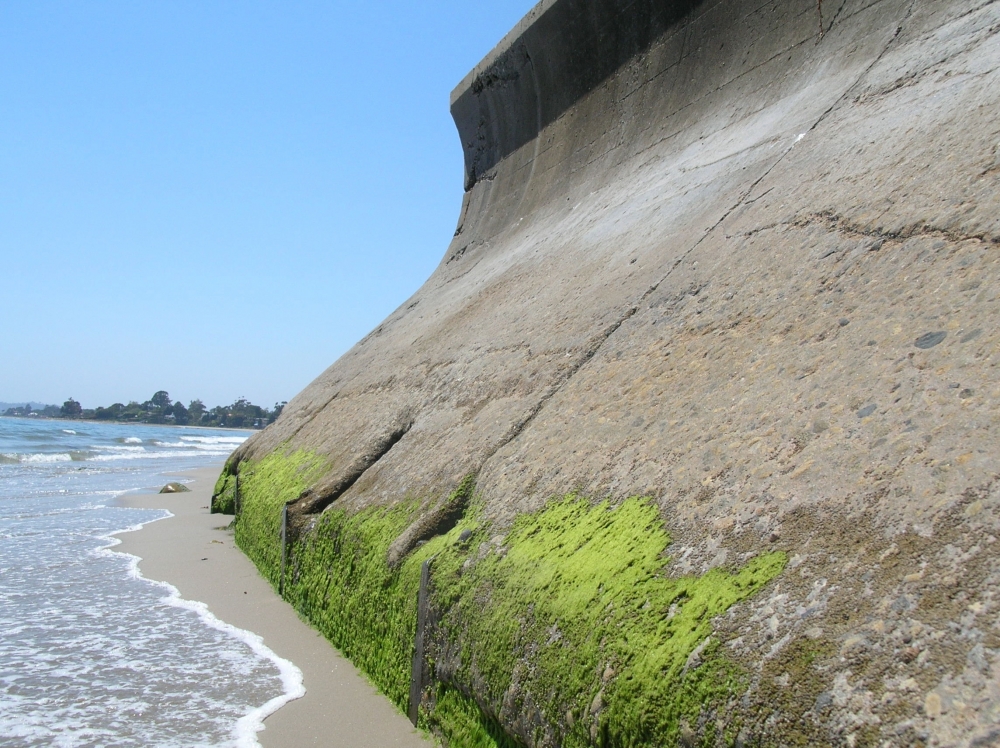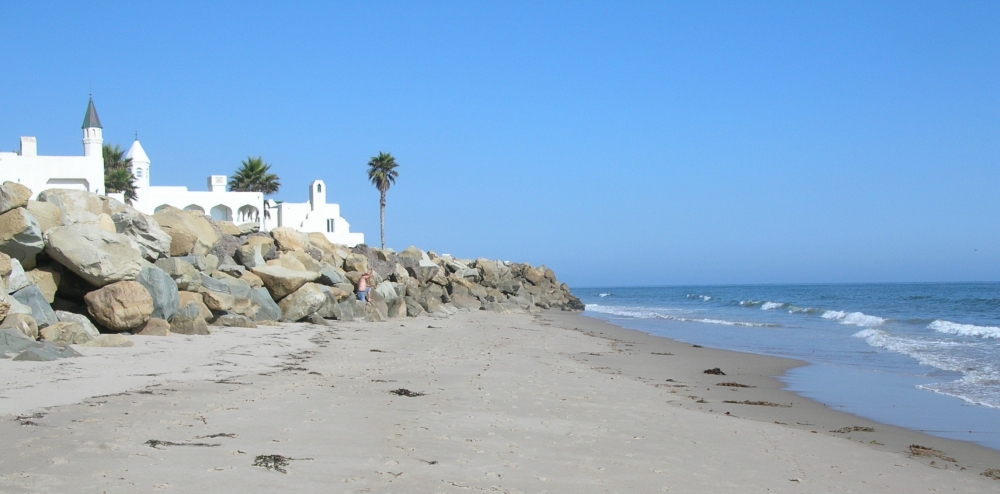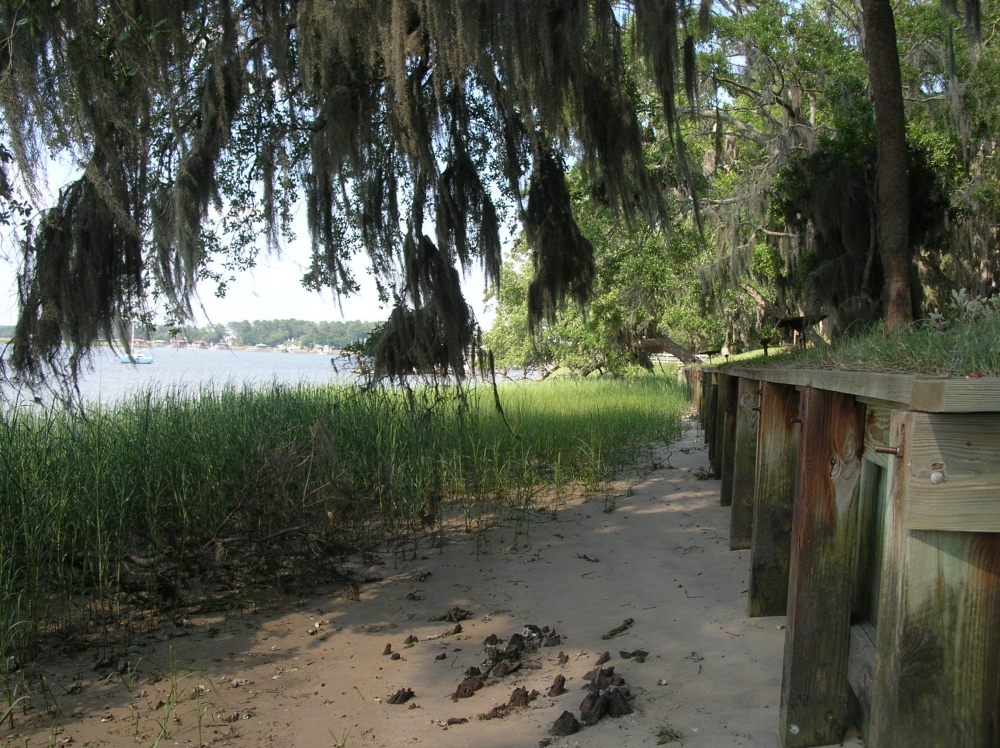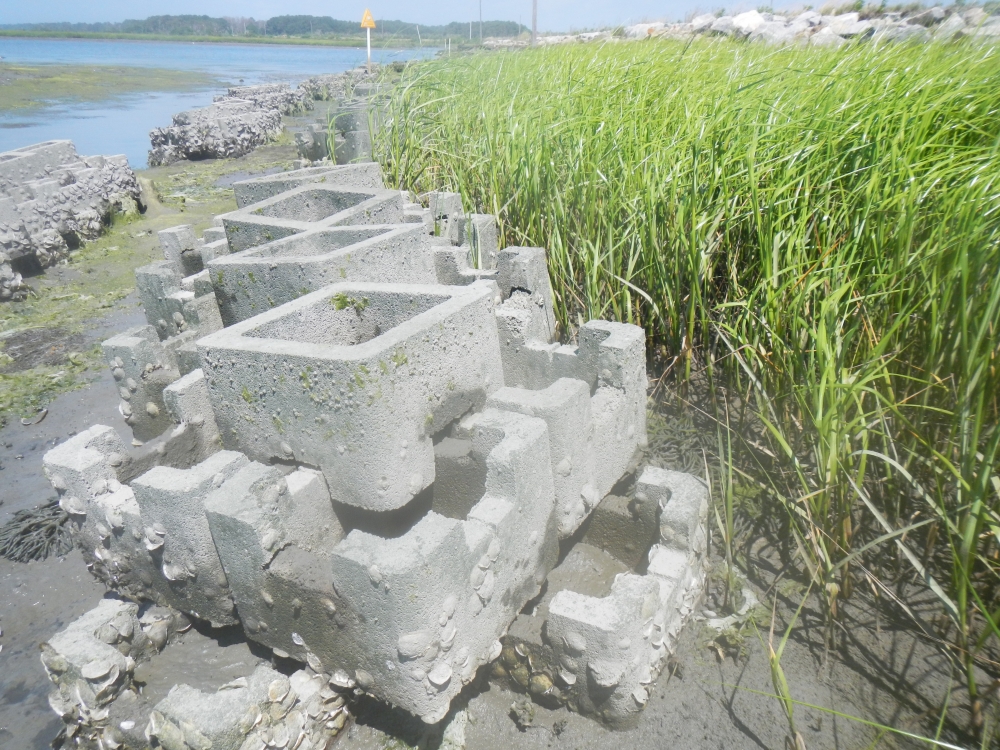The Coast Is Not So Clear

For nearly a century, the O’Shaughnessy seawall has held back the sand and seas of San Francisco’s Ocean Beach. At work even longer: the Galveston seawall, built after America’s deadliest hurricane in 1900 killed thousands in Texas.
These are just two examples of how America’s coasts — particularly those with large urban populations — have been armored with man-made structures.
These structures essentially draw a line in the sand that constrains the ability of the shoreline to respond to changes in sea level and other dynamic coastal processes. While the resulting ecological effects have been studied more in recent years, the research largely has been conducted in specific settings, making it difficult to generalize these effects across ecosystems and structure types.
A new study by a team of UC Santa Barbara marine scientists and colleagues from three coastal sites in the National Science Foundation’s Long-Term Ecological Research (LTER) network provides a key first step toward generalizing ecological responses to armoring across the wide diversity of coastal settings where these structures are used. The team’s findings appear online and will be published this fall in a special issue of the journal Estuaries and Coasts, “Impacts of Coastal Land Use and Shoreline Armoring on Estuarine Ecosystems.”
Comparing Notes
The type of armoring structure varies widely with the environmental setting, ranging from massive seawalls and revetments along the wave-exposed open coast to smaller bulkheads and manmade oyster reefs in tidal marshes and estuaries. “The size and shape of these manmade structures often result in the loss of intertidal habitats,” said lead author Jenifer Dugan, a research biologist at UCSB’s Marine Science Institute. “The extent of that loss is a function of environmental setting, structure type and how far seaward and along the shore the structure extends.”
Scientists from three very different LTER programs were already working on the ecological impact of coastal armoring at their respective sites. At the Santa Barbara Coastal LTER, studies of the effects of seawalls on open coast beaches had revealed significant ecological impacts extending up to birds. The Georgia Coastal Ecosystems (GCE) project conducted studies of the effects of small-scale armoring in salt marshes. Studies at the Virginia Coast Reserve LTER focused on the use of constructed oyster reefs and living shorelines as coastal protection strategies.
“What was novel about this cross-site collaboration was putting these site-specific studies into perspective by making comparisons across a broad range of habitats,” said co-author Merryl Alber, a marine science professor at the University of Georgia and principal investigator of the GCE LTER project.
The collaborative study synthesizes the findings of existing literature examining different types of armoring across a variety of soft sediment ecosystems. The scientists used that data to evaluate a new conceptual model they created during two LTER cross-site workshops.
Exposing Gaps in Knowledge
“Our model uses two simple axes: the environmental setting of the armoring structure in terms of hydrodynamic energy, like wave and tide regimes, and the degree to which a structure was built to slow water movement or actually stop it from getting through,” Dugan explained. “We then reviewed the results from a wide spectrum of studies in the literature and used that information to evaluate how well our conceptual model could predict the ecological effects of armoring.”
Of the 88 studies reviewed by the researchers, the majority had been conducted in very low-energy environments — predominantly salt marshes and tidal creeks but also mangroves — and about one-quarter in medium-energy systems, such as harbors, river mouths and estuaries. Only 15 percent focused on high-energy environments — mostly open coast sandy beaches.
Across the six categories of ecological responses examined, the results of existing literature focused largely on changes in habitat and species distribution, leaving questions about how shoreline armoring affects other key ecological responses such as nutrient cycling, connectivity, productivity and trophic structure. Negative effects of shoreline armoring were reported in all six categories of ecological responses.
“Our review not only revealed major gaps in knowledge but also highlighted the fact that existing information on ecological responses to armoring is unevenly distributed across soft sediment habitat types and does not necessarily cover the range of potential environmental and armoring contexts,” said co-author Kyle Emery, a former student at the University of Virginia who is now working toward his doctorate at UCSB. “Our work makes it clear that there is certainly room for more studies.”
Next Steps
According to Dugan, as sea level continues to rise, existing coastal armoring structures are likely to experience greater hydrodynamic energy regardless of their environment. This, she noted, will magnify ecological impacts in many settings.
It turned out that overall the conceptual model generated useful predictions of the direction and relative impact of different types of shoreline armoring across soft sediment ecosystems. “Understanding how these ecological responses vary with hydrodynamic energy and their effect on water flow could help people design and install armoring structures that could have less ecological impact,” Dugan said. “Then, the menu of options would contain not only the cost of the structure but also some idea of the ecological implications of each type of structure based on the environmental setting.”
“This is one of the first attempts to assess how engineering structures on beaches and other sedimentary environments affect the biota that inhabits these locations,” said David Garrison, an LTER program director at the National Science Foundation, which supported the research. With some 40 percent of the nation’s human population living in coastal counties, Garrison noted that the study is certainly timely.
Other co-authors are Clark Alexander, James Byers, Alyssa Gehman and Natalie McLenaghan, all of the University of Georgia, and Sarah Sojka of Randolph College in Lynchburg, Virginia.







